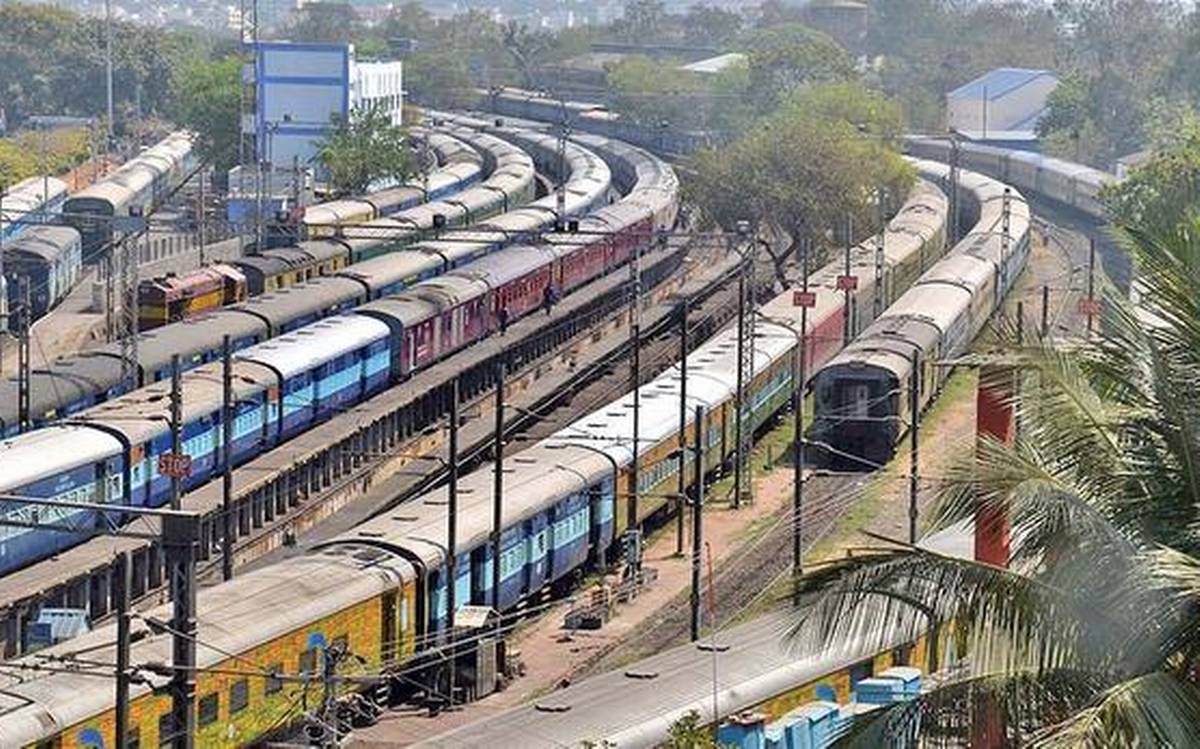
Unable to fund itself, Indian railways desperately looking out for help
The Modi government's insistence on improving infrastructure spending has resulted in year on year increase in capital expenditure by the Indian Railways (IR).

The Modi government’s insistence on improving infrastructure spending has resulted in year on year increase in capital expenditure by the Indian Railways (IR).
The effect of this could also be seen in the budget 2020-21, with the capex being at an “all-time high” of ₹1,61,042 crore against ₹1,56,352 crore in 2019-20 at the revised estimates (RE) stage – an increase of nearly 3% in for the new fiscal year.
Finance Minister Nirmala Sitharaman in her budget speech last month had spoken of the ₹102 lakh crore infrastructure pipeline and then laid out the IR’s capex initiatives that included electrification of 27,000 km of tracks, four-station re-development projects and operation of 150 passenger trains through PPP mode, more Tejas type trains to connect iconic tourist destinations etc.
Given that the IR is the largest transporter in the country, carrying nearly 22 million passengers and a fair share of the country’s freight daily the earnings should be rising and therefore to successfully execute such an ambitious capex plan it should be getting enhanced budgetary support and also be able to generate higher internal resources through higher traffic receipts.
However, according to a Parliamentary Standing Committee, over the years there has been a decline in the generation of internal resources by the IR.
Meaning, the transporter is now more dependent on budgetary support as well as on extra-budgetary resources (including market borrowings).
In fact, the contribution of internal resources to total capital outlay in percentage terms has fallen drastically during the Modi years.
At the BE stage in 2014-15, when this government first came to power, internal resource generation was a little over ₹16,000 crore. This has fallen to nearly a third now, with RE estimates pegging this figure for 2019-20 at just ₹5000 crore. Even in 2016-17, internal resource generation accounted for 11.03% of capital outlay at ₹12,125 crore.
But this amount was reduced to a fourth in the very next year at ₹3,070 crore, accounting for a mere 3.1% of total outlay in 2017-18. The share of internal resources improved only marginally to 3.5% in 2018-19 (₹4,663 crore). But again, it was just 3.2% or ₹5000 crore in RE 2019-20. For 2020-21, though the target is an ambitious ₹7500 crore (4.6%) of the total capital outlay, it remains to be seen if the target would be achieved at all and then whether the percentage share falls further.
So in a scenario where the contribution of internal resources was dwindling year on year as the capex was being expanded, it was but natural that IR resorted to extra-budgetary resources to fund its plans since incremental budget support was also hard to come by. For 2020-21, the budgetary allocation is ₹72,216 crore, just 3% more than the allocation for the current fiscal at the RE stage at ₹69,967 crore.
The parliamentary committee noted that EBR as a percentage of total capex accounted for well over 50% share in at least three Modi years: 2017-18, 2018-19 and the RE for 2019-20. For the current fiscal too, proposals at the BE stage show that more than 50 paise of every rupee the IR plans to deploy as capex will come from extra-budgetary resources.
Between 2016-17 and 2020-21 (BE stage), the EBR has increased by more than ₹30,000 crore. In 2014-15, the first year under the Modi government, EBR accounted for just a fourth or about 27 paise of every rupee of the total capex.
This increased reliance on extra budgetary resources obviously has a future revenue implication since incremental interest costs to fund borrowings would obviously affect the financial health of the IR. So while the national transporter lays new railway lines, expands passenger amenities and experiments with private train operations, its overall internal resource generation continues to be in a precarious state. The main reasons for the decline in internal resources are shortfall in passenger, freight and sundry earnings, year after year.
The panel has noted that the impact of the 7th Pay Commission has also contributed “significantly” to this downturn.
Meanwhile, the IR is expecting to close the current fiscal with a shortfall in gross traffic receipts of over ₹10,000 crore, as per revised estimates revealed in the Union Budget.
There is every reason to believe that this shortfall will widen further when the actual figures come in some months hence. In 2018-19 too, the transporter had reported a shortfall of just over ₹4000 crore in gross traffic receipts at the RE stage versus the target set out at the beginning of that year. But the actual shortfall was more than twice the gap at the RE stage, at nearly ₹11,000 crore.
This shortfall in gross traffic receipts has been an annual affair for the Railways, at least in the Modi regime, Though the earnings have risen each year over the previous year, they have been short of the target set out at the beginning of each fiscal by a wide margin. In 2015-16, the shortfall between the target and actual gross traffic receipts was a little over ₹19,000 crore; it was over ₹19,500 cr in 2016-17 and a little over ₹10,000 crore each in the next two fiscal years.
As for the IR’s operating ratio – how much it spends to earn each rupee – this metric worsened during the Modi government’s first term and continues to be a challenge. In four the last five years, this ratio has been over 95%: 96.5% in 2016-17, 98.4 in 2017-18, 97.29% in 2018-19 and according to data presented in the Budget, it is already 97.4% in 2019-20 at the RE stage.
So the pattern of increased dependence on extra-budgetary resources by the IR to fulfil its capex needs is unlikely to change, at least in the coming fiscal. ends


